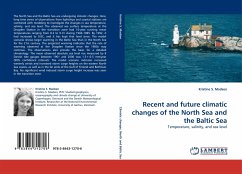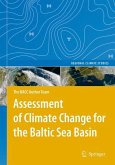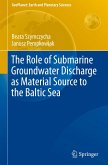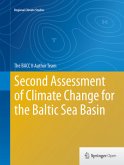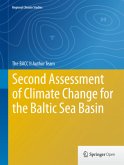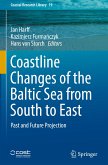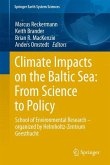The North Sea and the Baltic Sea are undergoing climatic changes. Here, long time series of observations from lightships and coastal stations are combined with modeling to investigate the changes in sea temperature, salinity, and sea level. The observed sea surface temperature at the Drogden Station in the transition zone had 10-year running mean temperatures ranging from 8.2 to 9.1C during 1904-1985. By 1992, it had increased to 9.8C, and it has kept that level since. The model scenario shows larger warming in the Baltic Sea than in the North Sea for the 21st century. The projected warming indicates that the rate of warming observed at the Drogden Station since the 1980s may continue. The observations also provide the basis for a detailed climatology. The mean observed absolute sea level rise measured by 8 Danish tide gauges between 1901 and 2000 was 1.5+-0.5 mm/year (90% confidence interval). The model scenario indicates increased westerly winds and increased storm surge heights on the eastern North Sea coasts, as well as in the far ends of the Gulf of Finland and Bothnian Bay. No significant wind induced storm surge height increase was seen in the transition zone.
Bitte wählen Sie Ihr Anliegen aus.
Rechnungen
Retourenschein anfordern
Bestellstatus
Storno

